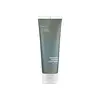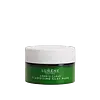What's inside
What's inside
 Key Ingredients
Key Ingredients

 Benefits
Benefits

 Concerns
Concerns

 Ingredients Side-by-side
Ingredients Side-by-side

Water
Skin ConditioningKaolin
AbrasiveGlycerin
HumectantDipropylene Glycol
HumectantBentonite
AbsorbentArtemisia Princeps Extract
Skin ConditioningStearic Acid
CleansingPanthenol
Skin Conditioning1,2-Hexanediol
Skin ConditioningIllite
AbrasiveArtemisia Montana Leaf Powder
ExfoliatingCamellia Sinensis Leaf Water
MaskingCastanea Crenata Shell Extract
Skin ConditioningOriganum Vulgare Leaf Extract
Skin ConditioningChamaecyparis Obtusa Leaf Extract
Skin ConditioningSalix Alba Bark Extract
AstringentAvena Sativa Kernel Extract
AbrasiveCynara Scolymus Leaf Extract
Skin ConditioningLactobacillus/Soybean Ferment Extract
Skin ConditioningPortulaca Oleracea Extract
Skin ConditioningCinnamomum Cassia Bark Extract
MaskingScutellaria Baicalensis Root Extract
AstringentMontmorillonite
AbsorbentCalcite
Skin ConditioningPhaseolus Angularis Seed Powder
Canadian Colloidal Clay
Skin ConditioningHydrogenated Lecithin
EmulsifyingBeta-Glucan
Skin ConditioningMethylpropanediol
SolventAlgin
MaskingMagnesium Aluminum Silicate
AbsorbentCetyl Alcohol
EmollientButylene Glycol
HumectantXanthan Gum
EmulsifyingAllantoin
Skin ConditioningTromethamine
BufferingPolyquaternium-51
Skin ConditioningEthylhexylglycerin
Skin ConditioningWater, Kaolin, Glycerin, Dipropylene Glycol, Bentonite, Artemisia Princeps Extract, Stearic Acid, Panthenol, 1,2-Hexanediol, Illite, Artemisia Montana Leaf Powder, Camellia Sinensis Leaf Water, Castanea Crenata Shell Extract, Origanum Vulgare Leaf Extract, Chamaecyparis Obtusa Leaf Extract, Salix Alba Bark Extract, Avena Sativa Kernel Extract, Cynara Scolymus Leaf Extract, Lactobacillus/Soybean Ferment Extract, Portulaca Oleracea Extract, Cinnamomum Cassia Bark Extract, Scutellaria Baicalensis Root Extract, Montmorillonite, Calcite, Phaseolus Angularis Seed Powder, Canadian Colloidal Clay, Hydrogenated Lecithin, Beta-Glucan, Methylpropanediol, Algin, Magnesium Aluminum Silicate, Cetyl Alcohol, Butylene Glycol, Xanthan Gum, Allantoin, Tromethamine, Polyquaternium-51, Ethylhexylglycerin
Water
Skin ConditioningKaolin
AbrasiveGlycerin
HumectantBetaine
HumectantCetyl Alcohol
EmollientButyrospermum Parkii Butter
Skin ConditioningCannabis Sativa Seed Oil
EmollientSucrose Distearate
EmollientCannabis Sativa Seedcake Powder
AbrasiveHectorite
AbsorbentBeta-Glucan
Skin ConditioningCetyl Palmitate
EmollientPectin
Emulsion StabilisingParfum
MaskingRhodiola Rosea Root Extract
EmollientSpiraea Ulmaria Extract
AstringentPhenoxyethanol
PreservativeTocopherol
AntioxidantXanthan Gum
EmulsifyingPropanediol
SolventHelianthus Annuus Seed Oil
EmollientSodium Gluconate
Skin ConditioningEthylhexylglycerin
Skin ConditioningLactic Acid
BufferingCI 75810
Cosmetic ColorantWater, Kaolin, Glycerin, Betaine, Cetyl Alcohol, Butyrospermum Parkii Butter, Cannabis Sativa Seed Oil, Sucrose Distearate, Cannabis Sativa Seedcake Powder, Hectorite, Beta-Glucan, Cetyl Palmitate, Pectin, Parfum, Rhodiola Rosea Root Extract, Spiraea Ulmaria Extract, Phenoxyethanol, Tocopherol, Xanthan Gum, Propanediol, Helianthus Annuus Seed Oil, Sodium Gluconate, Ethylhexylglycerin, Lactic Acid, CI 75810
 Reviews
Reviews

Ingredients Explained
These ingredients are found in both products.
Ingredients higher up in an ingredient list are typically present in a larger amount.
Beta-Glucan is a polysaccharide. It can be derived from the cell walls of seaweed, oats, yeast, and fungi. It hydrates the skin and helps boost your skin's natural barrier.
As an antioxidant, beta-glucan helps fight free-radicals. Free-radicals are molecules that may damage your skin cells, such as pollution.
Studies show this ingredient may be an effective wrinkle reducer as it can deeply penetrate into skin. It has also been show to help with wound healing.
Learn more about Beta-GlucanCetyl Alcohol is a fatty alcohol. Fatty Alcohols are most often used as an emollient or to thicken a product.
Its main roles are:
Though it has "alcohol" in the name, it is not related to denatured alcohol or ethyl alcohol.
The FDA allows products labeled "alcohol-free" to have fatty alcohols.
Learn more about Cetyl AlcoholEthylhexylglycerin (we can't pronounce this either) is commonly used as a preservative and skin softener. It is derived from glyceryl.
You might see Ethylhexylglycerin often paired with other preservatives such as phenoxyethanol. Ethylhexylglycerin has been found to increase the effectiveness of these other preservatives.
Glycerin is already naturally found in your skin. It helps moisturize and protect your skin.
A study from 2016 found glycerin to be more effective as a humectant than AHAs and hyaluronic acid.
As a humectant, it helps the skin stay hydrated by pulling moisture to your skin. The low molecular weight of glycerin allows it to pull moisture into the deeper layers of your skin.
Hydrated skin improves your skin barrier; Your skin barrier helps protect against irritants and bacteria.
Glycerin has also been found to have antimicrobial and antiviral properties. Due to these properties, glycerin is often used in wound and burn treatments.
In cosmetics, glycerin is usually derived from plants such as soybean or palm. However, it can also be sourced from animals, such as tallow or animal fat.
This ingredient is organic, colorless, odorless, and non-toxic.
Glycerin is the name for this ingredient in American English. British English uses Glycerol/Glycerine.
Learn more about GlycerinKaolin is a clay. It is used for oil control and to help minimize pores. Like other clays, kaolin has the ability to absorb excess sebum or oil. This can help clean out pores and mattify the skin.
Some types of kaolin may have exfoliating properties. When water is added to kaolin, it becomes a paste with small abrasive particles.
Most kaolin is a white color, but may be pink/orange/red depending on where it comes from.
The name 'kaolin' comes from a Chinese village named 'Gaoling'. Kaolin clay comes from rocks rich in kaolinite. Kaolinite, the mineral, has a silicate layered structure. Kaolinite is formed from chemical weathering of aluminum siilicate minerals.
Besides skincare, kaolin is commonly used to make glossy paper, in ceramics, toothpaste, and as medicine to soothe stomach issues.
Learn more about KaolinWater. It's the most common cosmetic ingredient of all. You'll usually see it at the top of ingredient lists, meaning that it makes up the largest part of the product.
So why is it so popular? Water most often acts as a solvent - this means that it helps dissolve other ingredients into the formulation.
You'll also recognize water as that liquid we all need to stay alive. If you see this, drink a glass of water. Stay hydrated!
Learn more about WaterXanthan gum is used as a stabilizer and thickener within cosmetic products. It helps give products a sticky, thick feeling - preventing them from being too runny.
On the technical side of things, xanthan gum is a polysaccharide - a combination consisting of multiple sugar molecules bonded together.
Xanthan gum is a pretty common and great ingredient. It is a natural, non-toxic, non-irritating ingredient that is also commonly used in food products.
Learn more about Xanthan Gum